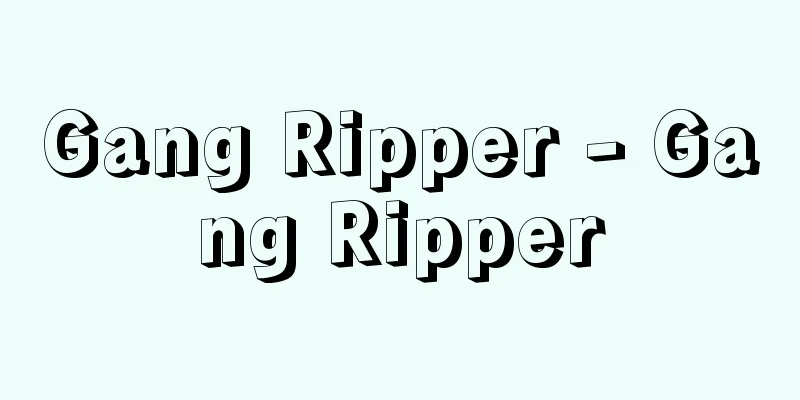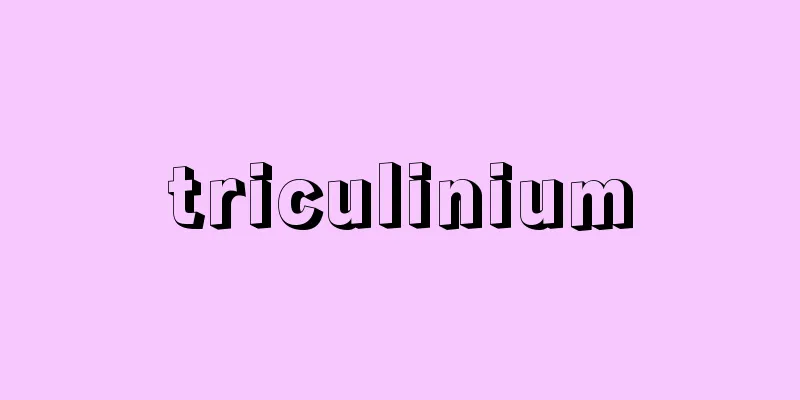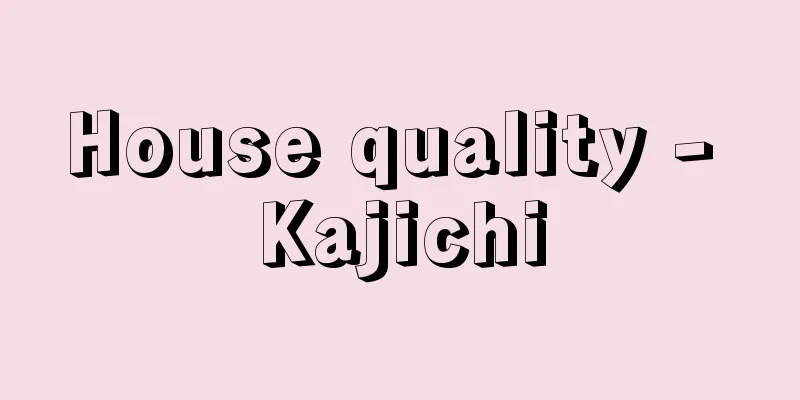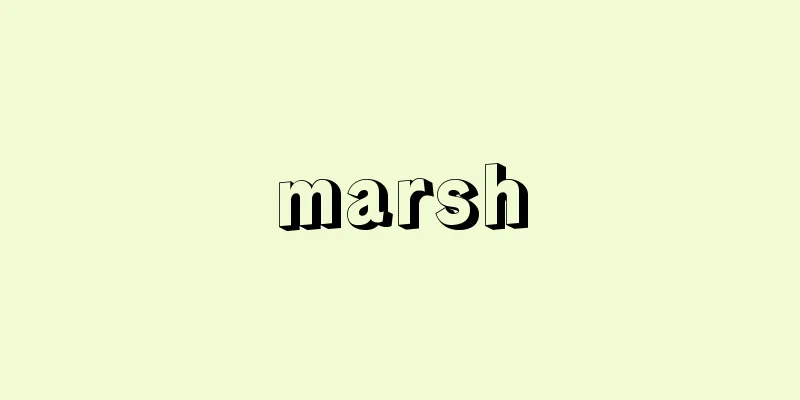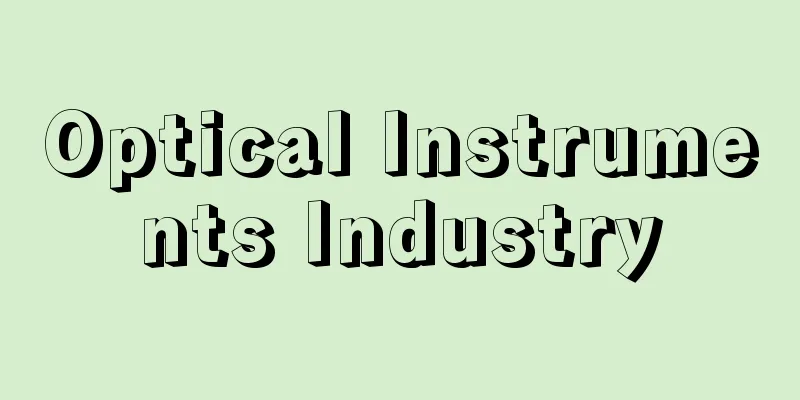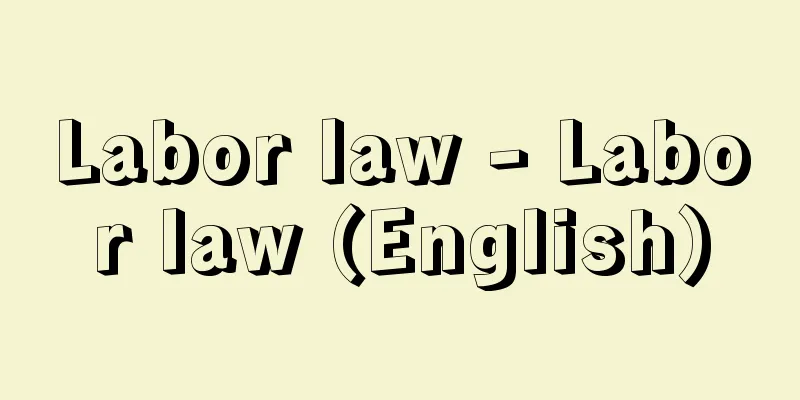Correctional education - Kyoseikyoiku
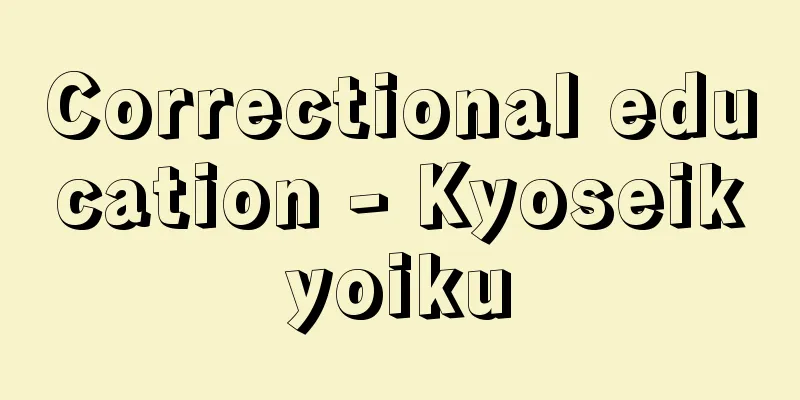
|
Legally, it means the education given to juveniles in juvenile training schools, as it is defined as "a juvenile training school is a facility that houses those who have been sent there by the family court as a protective measure and provides them with correctional education" (Article 1 of the Juvenile Training School Act). Furthermore, it is stipulated that the content of the education should be such that, in order to help the inmates adapt to social life, it should appeal to their self-awareness, and under the guidance of discipline, they should be provided with subjects corresponding to school education, as well as vocational guidance, appropriate training, and medical care (Article 4 of the same Act). In English, it is called corrective education. The Correctional Institutions Act (Act No. 43 of 1922), which existed before the current Juvenile Training School Act was enacted, did not use such clear words to describe the education given at correctional institutions. Terms such as juvenile protection, protection work, and protection education were generally used. These terms should be considered to include the same content as today's correctional education. In Japan, the first institutions to provide special education to juvenile offenders, separate from adult offenders, were penal institutions, as stipulated in the Prison Regulations enacted in 1872 (Meiji 5). Penal institutions were abolished in 1907 (Meiji 40), and in their place, correctional institutions were established in 1922 (Taisho 11). However, the term "correctional education" is not only used in the Juvenile Training School Law. Even in prisons, where inmates are detained and punishment is carried out, various activities called education, treatment, correction, etc. are carried out, and they are often collectively referred to as "correctional education." This is based on the educational and penal theory that even adult criminals should be actively educated to improve their character, and although it is not explicitly stipulated in the Prison Law, it is currently in common use. Also, although the term "correctional education" is not used, there is an activity called probation supervision of adult criminals and delinquent juveniles, which is carried out under the supervision of probation offices. Probation supervision is often called "in-community treatment," whereas treatment in juvenile training schools and prisons is called "in-facility treatment." If we exclude the treatment setting, from the standpoint of educational research, this should also be considered as correctional education in the broad sense. A reformatory, a type of child welfare institution, has the purpose of admitting children who have engaged in or are at risk of engaging in delinquent behavior, and providing them with education and protection. This refers mainly to children under the age of 14, and is intended to help them eliminate delinquent tendencies and achieve healthy physical and mental development. In the case of reformatories, the predecessors of reformatories, similar educational activities were called "reform." These educational activities called reform and education are not considered to be significantly different from corrective education in the broad sense. Following the revision of the Child Welfare Act in June 1997, reformatories were renamed children's independence support facilities in April 1998, and children who require lifestyle guidance due to their home environment or other reasons were also included as targets of the reformatory. In school education, when we consider the education of students and children who have serious problem behaviors, sometimes violating criminal laws, we are reaching a point where the conventional general education curriculum cannot deal with them. This is also an issue that should be studied as part of correctional education. Therefore, it would be appropriate to think of correctional education in the broad sense as the education of criminals and delinquents, mainly juveniles. [Kazuho Soejima] [References] | | | prison|Source: Shogakukan Encyclopedia Nipponica About Encyclopedia Nipponica Information | Legend |
|
法律上では、「少年院は、家庭裁判所から保護処分として送致された者を収容し、これに矯正教育を授ける施設」(少年院法1条)とあるように、少年院の在院少年に対して行われる教育を意味する。さらに、その内容は、在院者を社会生活に適応させるため、その自覚に訴え、紀律ある生活のもとに、学校教育に対応する教科、ならびに職業の補導、適当な訓練、および医療を授けるものであると規定している(同法4条)。英語ではcorrectional educationという。 現行少年院法の制定される以前の矯正院法(大正11年法律43号)のなかには、矯正院で行われる教育について、このように明確なことばは使われていない。一般的には少年保護、保護事業、あるいは保護教育などが用いられていたようである。これらのことばも、今日の矯正教育と同じ内容を含んでいたものと考えるべきであろう。なお日本において、成人犯罪者と区別して少年犯罪者に特別の教育を実施したのは、1872年(明治5)制定の監獄則に規定された懲治(ちょうじ)場が最初である。懲治場は1907年(明治40)に廃止され、それにかわるものとして、22年(大正11)に矯正院が設けられた。 しかし矯正教育ということばは、この少年院法のなかだけで使用されているわけではない。受刑者を拘禁して刑罰を執行する刑務所のなかでも、教育、処遇、矯正などとよばれる多様な活動が行われ、それらを総括して矯正教育ということも多い。このことは、成人の犯罪者であっても、積極的に教育することによって、人格の向上が図られるべきであるという教育刑理論に基づいており、監獄法には明文の規定としてはないが、現在一般に用いられている。 また、矯正教育ということばを使ってはいないけれども、保護観察所のもとで行われている成人犯罪者や非行少年の保護観察という活動がある。保護観察は、少年院や刑務所の処遇を施設内処遇とよぶのに対して、社会内処遇とよばれることが多い。処遇場面を除いて考えるならば、教育研究の立場からは、これもまた広義の矯正教育とみなすべきであろう。 児童福祉施設の一つである教護院は、不良行為をなし、またはなすおそれのある児童を入院させて、これを教護することを目的とする。主として14歳以下の児童を中心に、不良性を除去して心身の健全な成長を遂げるように援助することを教護とよんでいる。教護院の前身である感化院の場合には、同様の教育活動を感化とよんでいた。これらの感化や教護とよばれる教育活動も、広義の矯正教育と大きく異なる教育活動であるとは考えられない。なお教護院は1997年6月の児童福祉法改正に伴い、98年4月より児童自立支援施設に改称され、家庭環境その他の理由により生活指導等を要する児童も対象に加えられている。 学校教育においても、著しい問題行動、ときとして刑罰法令を犯す生徒・児童の教育を考えるとき、従来の一般的な教育課程によっては対処できない事態に立ち至っている。これも矯正教育の一環として研究されるべき問題である。したがって広義の矯正教育は、少年を中心とする、犯罪者や非行者の教育であると考えるのが適切であろう。 [副島和穂] [参照項目] | | | |出典 小学館 日本大百科全書(ニッポニカ)日本大百科全書(ニッポニカ)について 情報 | 凡例 |
>>: Government agency - gyosei kikan
Recommend
American football
A team sport invented by American students based o...
Long-legged spider - Ashinagagumo
This spider belongs to the Arthropoda phylum, Ara...
Ebéniste (English spelling) [France]
The term refers to a craftsman who works with ebon...
Warekara (split shell) - Warekara (English spelling) skeleton shrimp
A general term for crustaceans in the suborder Cap...
METEOR
...An artificial satellite with the function of o...
Intensity of labour
It is the amount of labor expenditure per unit of...
Rokunohe [town] - Rokunohe
A town in Kamikita district, eastern Aomori prefec...
Public Works of Art Project
…[Kenzaburo Shinkawa] Four artist rescue programs...
"Commentary on the Yin Ruins" - Inkyosho Keikosha
…He was one of the first to recognize the value o...
Neljubow, DN (English spelling) NeljubowDN
…It also plays an important role in the field of ...
《Caged Bird》 - Caged bird
…These films were not very different from the tra...
Kushimotoura
...In the early modern period, Kushimoto Village ...
Basket Shingen
…Until the 1880s, women's belongings mainly c...
Sarumaru Dayu - Sarumaru Dayu
Year of birth: Year of birth and death unknown. A ...
Endplate - Endplate
…In the case of striated muscles, each muscle cel...

